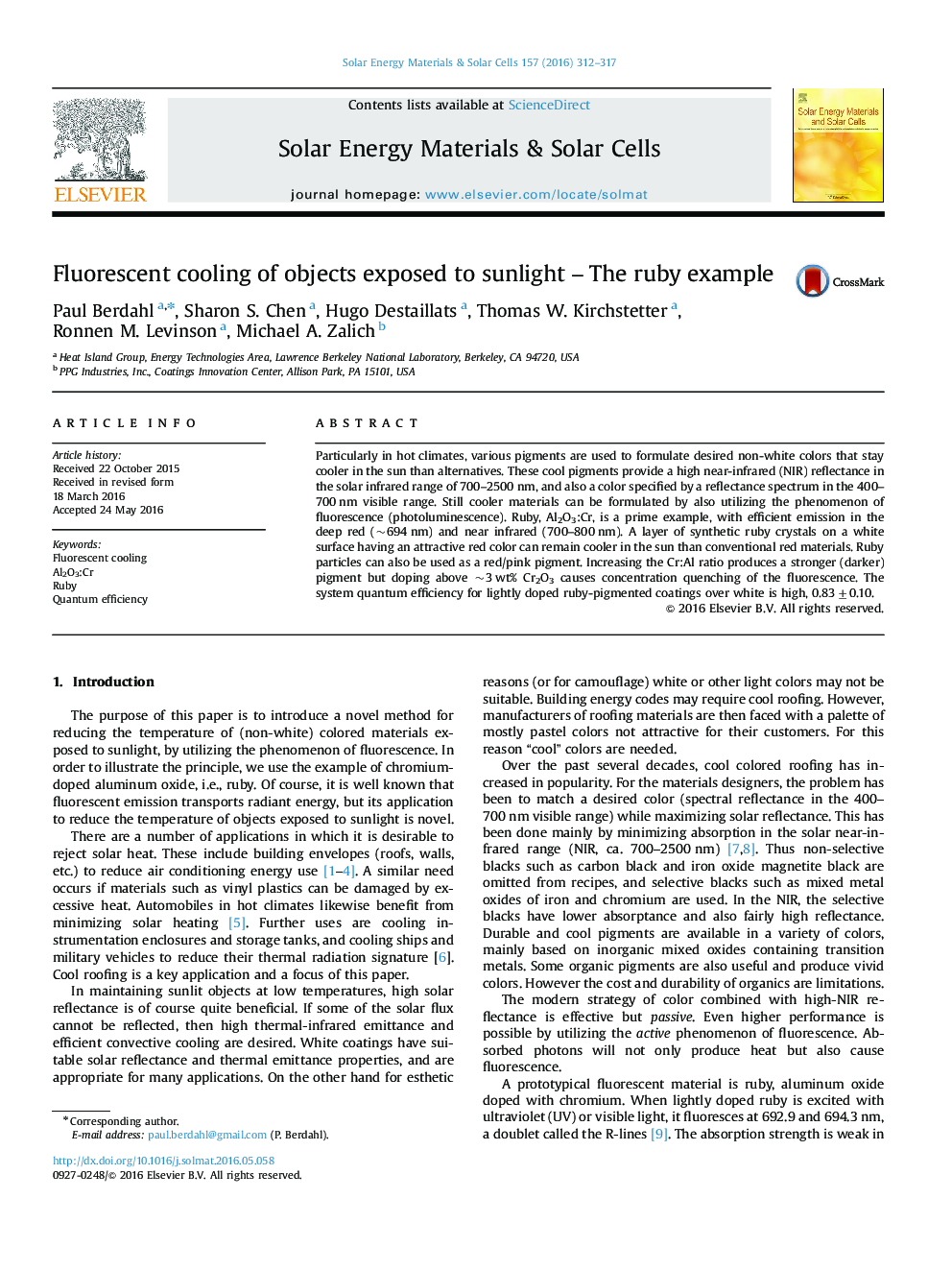| Article ID | Journal | Published Year | Pages | File Type |
|---|---|---|---|---|
| 6534584 | Solar Energy Materials and Solar Cells | 2016 | 6 Pages |
Abstract
Particularly in hot climates, various pigments are used to formulate desired non-white colors that stay cooler in the sun than alternatives. These cool pigments provide a high near-infrared (NIR) reflectance in the solar infrared range of 700-2500 nm, and also a color specified by a reflectance spectrum in the 400-700 nm visible range. Still cooler materials can be formulated by also utilizing the phenomenon of fluorescence (photoluminescence). Ruby, Al2O3:Cr, is a prime example, with efficient emission in the deep red (~694 nm) and near infrared (700-800 nm). A layer of synthetic ruby crystals on a white surface having an attractive red color can remain cooler in the sun than conventional red materials. Ruby particles can also be used as a red/pink pigment. Increasing the Cr:Al ratio produces a stronger (darker) pigment but doping above ~3 wt% Cr2O3 causes concentration quenching of the fluorescence. The system quantum efficiency for lightly doped ruby-pigmented coatings over white is high, 0.83±0.10.
Keywords
Related Topics
Physical Sciences and Engineering
Chemical Engineering
Catalysis
Authors
Paul Berdahl, Sharon S. Chen, Hugo Destaillats, Thomas W. Kirchstetter, Ronnen M. Levinson, Michael A. Zalich,
